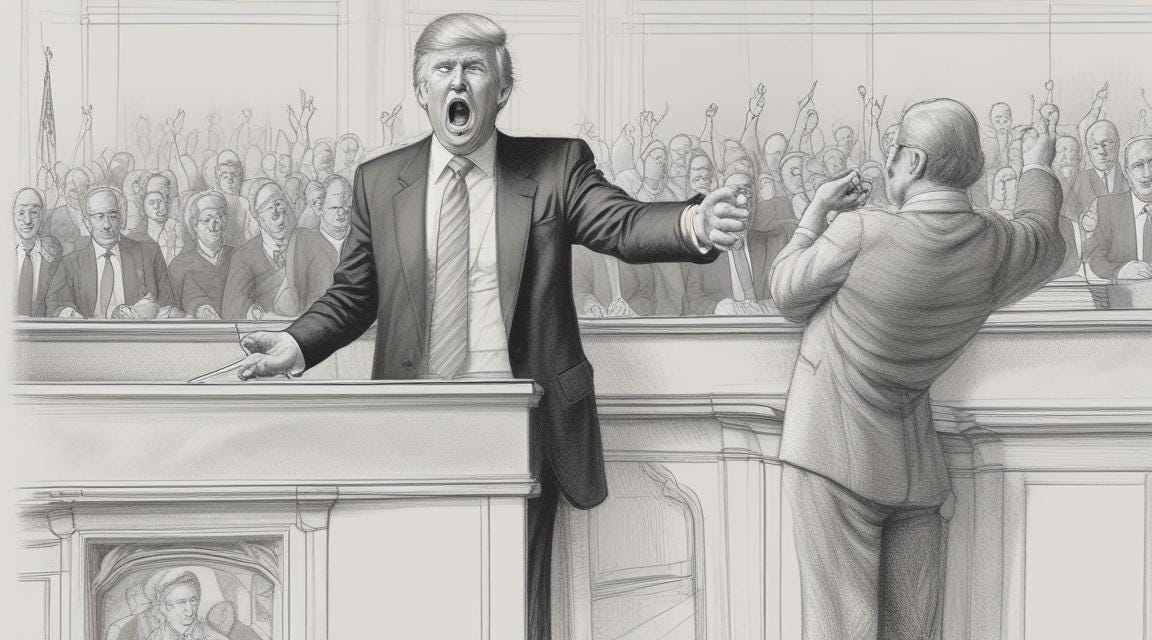This Day in Legal History: Racist Restrictive Covenants Struck Down
On May 3, 1948, a significant legal decision was rendered by the United States Supreme Court, fundamentally altering the landscape of civil rights and property law. The case, Shelley v. Kraemer, addressed the pernicious practice of racially-restrictive covenants in real estate. These covenants were agreements embedded in the deeds of properties that prohibited the sale of these properties to individuals of certain races, most commonly African Americans.
The Supreme Court's decision in Shelley v. Kraemer struck down the legal enforcement of these covenants, ruling that while private parties may enter into whatever agreements they choose, they cannot seek judicial enforcement of covenants that violated constitutional principles of equality. The Court held that such enforcement by state courts constituted state action and therefore was subject to the Equal Protection Clause of the Fourteenth Amendment.
The background of the case involved an African American family, the Shelleys, who purchased a home in a neighborhood in St. Louis, Missouri. This neighborhood had an existing covenant that barred African Americans from owning property. When the Shelleys moved in, several of their white neighbors sought to enforce the covenant to prevent them from taking ownership.
The Missouri Supreme Court had originally sided with the neighbors, ruling that the covenant was enforceable. However, the U.S. Supreme Court's decision reversed this ruling. Justice Fred M. Vinson, writing for the majority, emphasized that the enforcement of racially restrictive covenants by state courts amounted to a state action that denied equal protection of the laws.
This landmark decision was a crucial step forward in the fight against institutionalized racism, particularly in housing. It reflected the growing judicial recognition of civil rights issues and set a precedent for future rulings related to racial discrimination. Moreover, Shelley v. Kraemer highlighted the judiciary's role in upholding constitutional rights against socially entrenched racial discrimination.
The ruling did not, however, eliminate racially restrictive covenants overnight. Many neighborhoods continued to observe such agreements informally, and it wasn't until later legislative efforts, such as the Fair Housing Act of 1968, that such practices were comprehensively outlawed. Nevertheless, the Shelley v. Kraemer decision remains a pivotal moment in American legal history, celebrated for its affirmation of the principles of equality and justice enshrined in the U.S. Constitution.
The Biden administration is set to implement a rule that will allow undocumented immigrants who arrived in the U.S. as children and are covered under the Deferred Action for Childhood Arrivals (DACA) program to receive subsidized health insurance through Obamacare. This rule, scheduled for release by the Department of Health and Human Services (HHS), will redefine "lawfully present" individuals to include DACA recipients, enabling them to access premium tax credits and cost-sharing reductions when purchasing plans from federal and state marketplaces beginning November 1, 2024.
HHS Secretary Xavier Becerra emphasized the importance of this change, noting that over a third of DACA recipients currently lack health insurance. The inclusion of DACA recipients is expected to improve not only their health and wellbeing but also contribute positively to the overall economy. Additionally, the rule will permit these individuals to enroll in basic health programs similar to Medicaid in certain states, provided they earn no more than 200% of the poverty level.
The Centers for Medicare & Medicaid Services anticipate that this adjustment could result in 100,000 previously uninsured DACA recipients gaining health coverage. This decision marks a significant shift from previous policies where DACA recipients were excluded from being considered "lawfully present" for insurance purposes due to the original rationale behind the DACA policy, which did not address eligibility for insurance affordability programs.
The significant development in this story is the modification of the definition of "lawfully present" by the HHS to include DACA recipients. This change is crucial as it directly impacts the eligibility of these individuals for health insurance subsidies under Obamacare, a shift in policy that broadens access to healthcare for a previously marginalized group.
DACA Immigrants Win Access to Obamacare Subsidies in HHS Rule
In a groundbreaking trial in Chicago, attorneys for Angela Valadez, an 89-year-old woman who developed colon cancer, argued that pharmaceutical companies GSK and Boehringer Ingelheim were aware that the heartburn medication Zantac could become carcinogenic under certain conditions but failed to alert the public. The lawyers contended that Zantac's active ingredient, ranitidine, could transform into a cancer-causing substance called NDMA if it aged or was subjected to high temperatures, and accused the companies of covering up the degradation of the pills by altering their appearance.
GSK and Boehringer Ingelheim, the only defendants in this trial after other companies reached settlements, defended their product. They insisted that Zantac has been proven safe and effective through numerous studies and that no direct evidence links Zantac to Valadez’s cancer, citing her other risk factors for the disease.
The U.S. Food and Drug Administration had removed Zantac and its generic versions from the market in 2020 after detecting NDMA in some samples. Despite this, a significant legal victory came for the companies in 2022 when a judge dismissed about 50,000 claims, questioning the scientific backing of the assertion that Zantac could cause cancer. However, with more than 70,000 cases still pending, largely in Delaware, the issue remains a significant legal and public health concern. A newer version of Zantac with a different active ingredient is currently on the market, which does not contain ranitidine.
GSK knew about Zantac cancer risk, attorneys tell jury in first trial | Reuters
In the ongoing criminal trial of former U.S. President Donald Trump in New York, a new defensive angle emerged as Trump's lawyer portrayed the hush money payment at the center of the trial as potentially extortive. The payment in question involved Stormy Daniels, real name Stephanie Clifford, who was reportedly paid to keep quiet about an alleged encounter with Trump prior to the 2016 presidential election.
During the proceedings, defense attorney Emil Bove questioned Keith Davidson, Daniels' former lawyer, about his history with negotiating cash-for-dirt agreements with celebrities, hinting that Davidson's actions bordered on extortion. Trump's legal team appears to be focusing on undermining the credibility of prosecution witnesses like Daniels and Michael Cohen, Trump’s former lawyer and fixer, who arranged the controversial $130,000 payment. Trump has denied any encounter with Daniels and pleaded not guilty to the charges of falsifying business records to conceal the payment.
This trial aspect dovetails with previous testimony regarding Cohen's disappointment over not receiving a major governmental post after Trump's election victory. Cohen, who later disassociated from Trump and criticized him publicly, is expected to be a key witness. He has already served prison time for his role in the payment scheme.
Moreover, the trial has seen further complications due to Trump's conduct outside the courtroom. Justice Juan Merchan has had to address violations of a gag order by Trump, who has been fined and could potentially face jail for continuing infractions. Trump has criticized the trial publicly, claiming it is an attempt to prevent his political comeback and alleging conflicts of interest by those involved in the trial.
Trump's various legal troubles include other serious charges, such as attempting to overturn the 2020 election results and mishandling classified documents, adding layers of complexity to his current legal battles as he campaigns for the 2024 presidential election. These developments suggest a trial fraught with legal and political ramifications, with Trump’s defense pushing back against what they suggest are questionable prosecutorial tactics and witness credibility.
Trump trial hears Michael Cohen was 'despondent' he was denied a government post | Reuters
Trump lawyer suggests hush money payment was extortion | Reuters
This week’s closing theme is by Johannes Brahms.
Johannes Brahms, born on May 7, 1833, in Hamburg, Germany, is one of the most revered figures in the history of classical music. His compositions span a wide range of genres, including chamber works, symphonies, and choral compositions. Brahms was known for his perfectionist approach, often taking years to refine his works to his satisfaction.
Among his most celebrated creations is Symphony No. 1 in C minor, Op. 68. This symphony, which took Brahms about 14 years to complete, is frequently dubbed "Beethoven's Tenth" due to its stylistic similarities to Ludwig van Beethoven's symphonic work, especially the Ninth Symphony. Brahms’s dedication to living up to Beethoven's legacy is evident in the meticulous structure and emotional depth of the piece.
Symphony No. 1 was first performed in 1876, and since then, it has become a staple in the orchestral repertoire. It is particularly noted for its profound depth and complexity. The symphony unfolds over four movements, beginning with a dramatic and tense first movement that features a memorable timpani motif, which sets a somber and introspective mood. This is followed by a gentle and lyrical second movement, offering a stark contrast to the dramatic opening. The third movement, often considered the heart of the symphony, showcases Brahms's skill in thematic development and orchestral color. The finale is a triumphant resolution to the symphony's earlier tensions, culminating in a powerful and uplifting theme that echoes Beethoven’s own symphonic climaxes.
This week’s closing theme features this masterful work by Brahms, inviting listeners to explore the depths of his musical genius. Symphony No. 1 stands not just as a nod to Beethoven’s influence but as a significant original contribution to the symphonic form, marking Brahms’s triumphant emergence as a composer of the first order in the orchestral domain.
Without further ado, Brahm’s Symphony No. 1 in C Minor, Op. 68 - III. Un poco allegretto e grazioso, enjoy.














